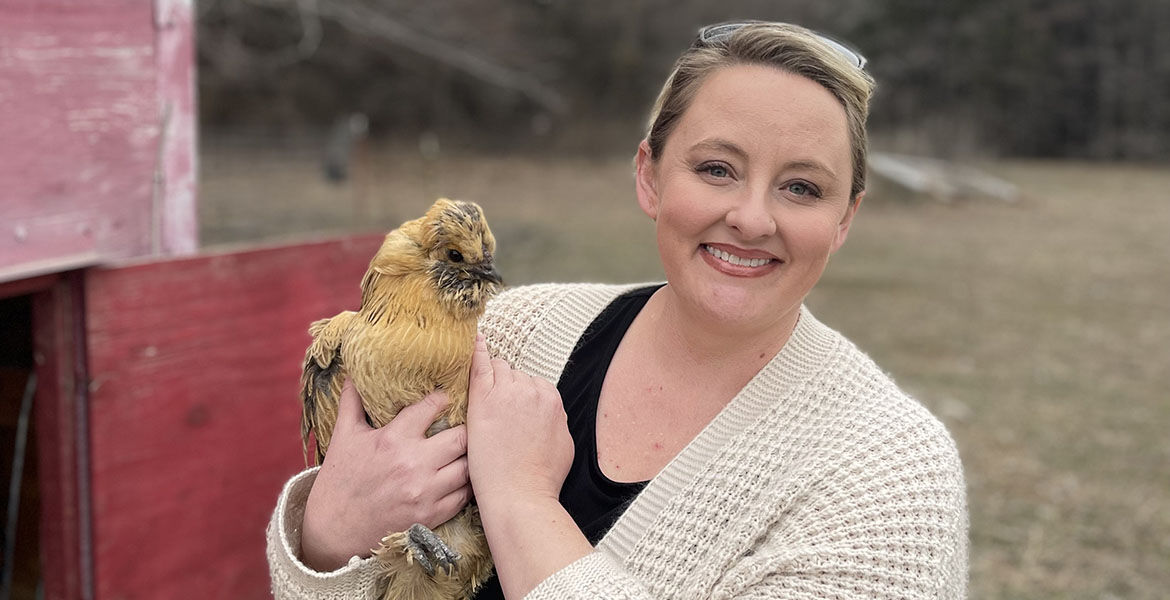Understand the costs and risks of a backyard flock

The price jump in eggs over the past few months has inspired some consumers to establish their own flock of backyard chickens. Others who have taken on the adventure enjoy it as a hobby.
For those interested in acquiring chickens this spring, remember baby chicks are cute, but chickens are livestock, and all livestock requires time, effort and money.
When Melissa Holderby, her husband and three children moved to a 30-acre farm a couple of years ago, they knew the first thing they wanted to do was invest in chickens.
Their small city of Bristow does not permit a backyard flock, but once living outside the city limits, the family ordered an all-female run of 15 chicks from a hatchery online. Chicks have been shipped through the mail for more than a century because day-old chicks can survive 36 hours on the yolk.
“Buying chicks can be tricky because if you purchase a straight run from a bin in a store, they are not sexed,” she said. “Statistically, you’re going to get half roosters.”
Some YouTube videos, a couple of books and a few chicken enthusiast Facebook groups helped Holderby learn the basics of chicken care. She has since added one rooster who acts as a lookout for the flock.
Her hens roam the yard throughout the day and are protected in a coop overnight, but hawk, raccoon, snake, dog and coyote predation are a threat.
“The chickens all have names, and we’re attached to them, but you have to be practical,” Holderby said. “If one of them is sick or injured, you need to decide if you’re going to seek vet care or cull.”
As free-range chickens, her hens consume plenty of insects, including ticks, but Holderby also feeds them a balanced diet of layer ration, grit, a form of calcium such as oyster shells, and mealworms. Chicken scratch, which is traditionally comprised of cracked corn and other grains, is used sparingly as a treat. Holderby said she’s learned the rising cost of chicken food is an important line item of the poultry budget.
“Grain prices have skyrocketed, and the cost of feeding chicks has gone up along with the cost of food and eggs in the grocery store,” she said.
Know the rules before purchasing chickens
New owners can rely on Oklahoma State University Extension to answer backyard chicken questions. Dana Zook, OSU Extension west area livestock specialist, provided a few tips for first-time poultry owners in a recent segment of SUNUP, OSU Extension’s agriculture television show.
If ordering chicks online, Zook recommends selecting poultry from hatcheries that are National Poultry Improvement Plan certified. Farm store management can also provide information on the sourcing and certification of chicks for sale.
“Evaluate what kind of housing you’ll need and check local policy before buying chicks,” Zook said. “Some city ordinances may limit the number or types of birds. You’ll need 2 square feet per chicken for small breeds and 4 square feet for larger breeds.”
Chicks will need to be kept in a brooder until they are six to eight weeks old or until they are fully feathered. An absorbent material will give chicks good footing, and heat lamps help maintain a warm temperature. Zook suggested keeping a thermometer in the brooder and observing chick behavior.
“If chicks are spread out across the brooder, they’re comfortable,” she said. “If they are staying close to the edge, they’re too hot, and if they’re all huddled together under the heat lamp, they’re not warm enough.”
For chicks purchased at a local farm store, owners should ask what they were eating at the store and buy similar feed for home.
In addition to feeders and waterers, new chicken owners must decide if they are going to purchase a pre-made coop or materials to build one. Most urban backyards will require a chicken run, and biosecurity should be a priority for the safety of both animals and humans.
Sign up for HPJ Insights
Our weekly newsletter delivers the latest news straight to your inbox including breaking news, our exclusive columns and much more.
“We want to make sure we’re practicing intentional handwashing or even wearing gloves to prevent salmonella infections,” Zook said. “Children, the elderly and those who are immune compromised are more susceptible to salmonella.”
These days, Holderby’s farm has grown to also include a few guineas, some dairy goats and a couple of friendly dogs. Her children help with daily chores and gathering eggs that the family shares with friends. Every new venture presents a learning curve, but Holderby said they are happy to be a chicken family.
“It was easier than I expected it to be,” she said. “The chickens all have their own personalities, and they’re interesting to watch. It’s a simple way to teach kids about farm-to-table and animal husbandry.”



